Latest in Politics

In Photos: Former presidents, vice presidents gather in remembrance of Dick Cheney
The former vice president was honored by attendees across the aisle, but some notable political figures were not present.
read moreHouse lawmakers weigh negative implications of AI chatbot technology on mental health and data privacy
Note: This article includes mentions of suicide and self-harm.
WASHINGTON – The House Energy and Commerce Subcommittee on Oversight and Investigations debated the mental health impacts associated with use of AI chatbots on Tuesday, calling into question the technology’s responses to users experiencing mental health crises and suicidal ideation.
The emerging technology has come under fire in recent months after high-profile lawsuits were filed against OpenAI and other AI companies. In September, plaintiffs Matthew and Maria Raine testified before the Senate Judiciary Committee after their 16-year-old son Adam took his own life following extended conversations with ChatGPT. Matthew Raine claimed that the chatbot offered to write his son’s suicide note. After a prolonged virtual relationship with a Character.AI chatbot, 14-year-old Sewell Setzer III died by suicide in early 2024. Character.AI is trained to emulate various personas, including therapists, friends, and, in Setzer’s case, fictional characters. His mother, Megan Garcia, filed a lawsuit later that year.
Those suicides are among an exhaustive list of violent incidents associated with AI chatbots, which have come into national scrutiny as teenagers increasingly utilize AI technology.
Ranking member Yvette Clarke (D-N.Y.) said that AI chatbots are designed to emulate human conversations, creating a dynamic where young people develop unhealthy and addictive relationships with the technology.
“In the past few years, we’ve seen that users, especially younger users, are finding themselves deeply dependent on these bots and even struggling with differentiating between human relationships and what they perceive to have with the Chatbot,” she said.
New York-based psychiatrist Marlynn Wei said that younger teens are more vulnerable to developing an overreliance on AI. Nearly 3 in 4 teens have used AI companions, according to a July report from Common Sense Media. According to another study, 1 in 8 teens use generative AI tools for mental health support.
Wei also sounded the alarm on individuals using AI chatbots as a tool for mental health support, arguing that they were not originally intended to function as therapy bots.
“These systems are a useful sounding board and nonjudgmental space for many people. However, individuals who are isolated, vulnerable or less familiar with AI and its limitations may face greater risks,” she said.
According to Jonathan Cantor, Professor of Policy Analysis at RAND School of Public Policy and an expert on mental health, further exploration is necessary to uncover why teens are drawn to these platforms.
“I think that if we’re finding one in eight kids aren’t using these services, we really need to understand why,” he said.
He added that much of the existing research on generative AI has been tailored to corporate usage, rather than casual use among young people and everyday individuals.
“We’re collecting really good data on AI used by firms and businesses, but we aren’t doing the same for kids, adolescents and adults and what they’re using [chatbots] for,” he said.
This summer, the GOP attempted to include a provision banning states from regulating AI development for a decade in the Republicans’ One Big Beautiful Bill, but it was removed from the bill after public pushback.
In a press release last week, Committee Chairman Brett Guthrie (R-Ky.) and Congressman John Joyce, M.D. (R-Pa.) expressed concern about recent stories highlighting dangerous interactions between chatbots and users, referencing stories about suicide and violence associated with the chatbots.
“The rapid advancement of AI holds tremendous promise for the future, but recent stories about AI chatbots’ interactions with users have raised serious concerns about the potential impact of chatbot use on the health and wellbeing of those who engage with these platforms,” they said.
In his opening remarks on Tuesday, Joyce said that the technology can bear negative outcomes when unregulated.
“Without the proper safeguards in place, these chatbot relationships can turn out to be disastrous,” he said.
Critics of chatbot technology also highlight the industry’s lack of transparency in disclosing how user data is filed.
Jennifer King, private data policy fellow at Stanford, told the committee that the use of AI technology for mental health inquiries has the potential to compromise user data.
“The agreeable nature of chatbot interactions can encourage users to disclose in-depth personal details about physical or mental health concerns. This is concerning because large platforms are already contemplating how to monetize this data,” she said.
According to Forbes, social media companies currently monetize user data to train AI models, licensing said data to outside businesses.
King said that AI companies are not transparent with their users on how their data is handled.
“Companies are not being clear about what measures they are taking to protect consumer data at this point,” she said. “As we interact with these chatbots, the concern again is that we are disclosing far more personal information in these exchanges than we may have in web search,” she added.
Wei voiced concern over “AI psychosis”— a term coined to describe delusions and paranoia some users have experienced after using AI chatbots.
“It’s not a clinical diagnosis at this point, it was reported cases in the media of adults and teens who start to have a break from reality while using AI chatbots, and we don’t really know whether AI chatbots are causing this or that they just happen to be worsening, fanning the flames of psychosis,” she said.
Cantor said AI companies are attempting to find ways to boost transparency around mental health issues associated with the chatbots.
“I think that the firms themselves are doing as much as they can to try and understand this problem and to provide transparency to some degree about how they’re responding,” he said.
Lawmakers also weighed whether prioritizing innovation could coexist with protecting children.
Rep. Erin Houchin (R-Ind.) emphasized that limits should be implemented on AI tools that young people have access to, adding that parents should have “confidence” over their children’s AI usage.
“Innovation can only succeed when families have confidence in the tools their kids are using. We can support American innovation and still put common sense guardrails in place to protect children,” she said.
Rep. Alexandria Ocasio-Cortez (D-N.Y.) said she was concerned about the industry’s monetization of sensitive data.
She also said that the high value of AI companies conflicts with the protection of users, citing a Financial Times study that found that AI companies account for 80% of stock gains this year. She also highlighted how economic incentives for the industry to create high profits motivate companies to compromise their users’ privacy rights and encourage an “unethical” relationship with AI.
“When we talk about why AI models are going to such extremes and some of the extreme outcomes that we are seeing in terms of how people are using AI in terms of emotional companionship, to extreme cases of suicidality and psychosis, this also tracks with the pressure these companies have to turn a profit that they have not yet proven.
“People’s deepest fears, secrets, emotional content, relationships, can all be mined for this empty promise that we’re getting from these companies to turn a profit,” she added.
HOUSE REPUBLICANS RAISE CONCERNS OVER “SOFT ON CRIME” POLICIES IN DEMOCRATIC RUN CITIES
Note: This article includes mentions of violence and sexual assault.
WASHINGTON — Republicans in the House Judiciary Committee furthered an ongoing GOP campaign to spotlight criminal activity in Democratic-run cities on Wednesday. In a Subcommittee on Oversight hearing, witnesses from the New York police department and experts on crime testified about crime rates, policing and repeat offenders in major cities.
President Donald Trump has spent his first year in office targeting crime in Democratic run cities by sending in National Guard, often against the wishes of local officials, and escalating the use of Immigration and Customs Enforcement raids.
Chairman Rep. Jeff Van Drew (R-N.J.) opened the hearing by saying that Democrats have enabled violent crime by prioritizing “ideology over good public safety.”
“Crime just didn’t rise and come about on its own, it happened because leaders chose that,” Rep. Van Drew said. “Leaders in the Democratic-run cities have made political choices, choices that were radical ideology for safety politics.”
Witness Dr. Nancy La Vigne, Dean of Rutgers School of Criminal Justice, cited contradictory statistics to the GOP’s claims of crime being on the rise.
According to a 2024 Federal Bureau of Investigation report, murder rates declined 14.9% from 2023, along with a 5.2% decrease in rapes. Aggravated assaults also fell 3%.
“Nationwide crime is down 50% from its peak in 1991,” La Vigne said. “We’re clearly doing something right, and to that I say, ‘if it’s working, don’t break it.’ That’s precisely what this administration is doing,” she added.
Subcommittee ranking member Rep. Jasmine Crockett (D-Texas) condemned the increased militarization leveraged by the Trump administration, claiming that these tactics are more harmful than helpful..
“In Donald Trump’s America, you are at increased risk of experiencing militaristic operations in your home, increased risk of being subject to detainment by masked thugs and wannabe vigilantes and increased risk of suffering injuries due to reckless and illegal acts by rogue federal agents,” Rep. Crockett said.
Judiciary Committee ranking member Jamie Raskin (D-Md.) said that Democrats have been driving a recent decline in violent crimes. He also condemned the ideology that Democrats have enabled violent crime through lenient policies.
“This is an odd proposition to me, given that Democratic-led cities today are now driving a historic nationwide decrease in crime,” Rep Raskin said.
He added that Trump’s blanket pardoning of January 6 rioters contradicts his tough-on-crime stance. Holding up a statement made by Sgt. Aquilino Gonell, a former Capitol Police officer who was critically injured at the January 6 insurrection, Raskin claimed that Trump’s pardon of these rioters threatened public safety.
“Trump, his attorney general, and his FBI director talk tough about cracking down on violent crime…you would think they would want those who committed one of the most spectacular acts of public violence in living memory held accountable,” Gonell said.
While Democrats condemned the presence of federal agents in American cities, some claim that the National Guard is needed to promote safety in high-crime cities.
Tina McKinney, the mother of a Memphis Police Department Officer killed in the line of duty, told lawmakers that she condemned violent crime in major cities. She said that crime in cities like Memphis warrants a robust response from the federal government. She added that her son’s death was part of an ongoing crisis of failed policies.
“This wasn’t just a tragedy,” she said. “It was a failure of leadership and a failure of accountability. My son was a police officer, but he was also a victim…of failed policies and failed leaders.”
Latest in Education

Senators debate need for transparency in higher education costs
While the GOP is demanding a more transparent process for families investing in higher education, Democrats say it doesn’t go far enough to address rising costs of attendance and affordability.
read more‘It’s turning back time’: parents, experts fear special education layoffs threaten civil rights protections
WASHINGTON – Meredith Peterson is the parent of a 17-year-old with Down syndrome. The Pennsylvania mother said the Office of Special Education and Rehabilitative Services (OSERS) is crucial in protecting her access to resources and funding as she navigated raising her child.
Peterson says she relied on OSERS resources “to really understand and learn about education law, learn about procedural safeguards, the protections, and… to make sure that my child has what she needs and is thriving.”
Peterson is intimately familiar with OSERS operations. She is the Executive Director at PEAL, the Pennsylvania Parent Training and Information Center. The organization is mandated by IDEA, the law that provides funding and accommodations for 7.5 million kids with disabilities. It is overseen by OSERS.
But now, she says, those essential oversight and funding services are at risk.
The U.S. Department of Education eliminated 121 OSERS staff members and 137 people in the Office for Civil Rights in October, after the start of the government shutdown. In September 2024, the last time the federal government published agency employment numbers, OSERS had 179 staff members and the Office for Civil Rights had 568.
While all federal layoffs initiated during the government shutdown are temporarily paused by a federal judge, parents and experts say they fear that money and civil rights protections overseen by OSERS and the Office of Civil Rights could be lost.
“I feel like it’s turning back time,” Peterson said.
Dr. Shameka Stewart works with children with special education needs within the justice system. She said that with reduced staff, OSERS could become overloaded with requests for funding and parent complaints, leading to delays in enforcement.
“The youth are going to get the blunt [end] of all of this impact, because then, they’re not getting quality services – they’re not getting services at all,” Dr. Stewart said. “There’s going to be a risk to the compliance around [it] if the child is actually getting what they need to be successful in education, which is a civil rights violation.”
Peterson says she worries the lack of OSERS staff will leave parents like her without recourse if schools violate IDEA protections.
“Who is that oversight, and how does that family get the resolution when perhaps there is an inconsistency, or an unfairness, or discrimination that’s happening,” she asked. “Where does the family go?”
In a statement, Education Secretary Linda McMahon said the government shutdown has forced agencies like hers to reevaluate what services are “truly critical” for Americans.
“No education funding is impacted by the RIF, including funding for special education,” McMahon wrote on October 15. “Two weeks in, millions of American students are still going to school, teachers are getting paid, and schools are operating as normal. It confirms what the President has said: the federal Department of Education is unnecessary, and we should return education to the states,” she added.
However, educators argue returning oversight of education to the states could further threaten protections for special education students.
Dr. Tinita Kearney is a speech-language pathologist in Maryland who has worked with children with special education needs for over a decade.
“Even with the important protections and guidelines set by IDEA, schools and districts across the country differ greatly in how they follow them,” Dr. Kearney said. “Without strong oversight from the Department of Education, these differences could grow worse, harming students with disabilities nationwide.”
She says the potential staffing cuts are already leading to confusion and uncertainty in schools.
“That confusion means questions are going unanswered, timelines are extended, and those critical pieces, the services that these students need with consistency, are completely not being given consistently at this point,” Dr. Kearney said.
Peterson worries that without OSERS protections guaranteeing educational support, future career opportunities and even representation for students with disabilities could be put at risk.
“We are now in a society where our kids are everywhere,” she said. “You see ads on social media, you see ads in Target, American Eagle, and our kids are there because we’re included. We’re not being hidden anymore. I don’t want us to have to turn back time, where, you know, we’re no longer an accepting and inclusive society.”
For student parents, federal child care funding hangs in the balance
Daniel A. Gonzalez, 41, is a nursing student at Jamestown Community College in New York and a parent to 14-month-old Sebastiano. During his son’s first year, Gonzalez juggled night shifts at a medical clinic, diapers and classes on just a few hours of sleep — earning around $36,000 while trying to cover the soaring costs of baby formula and child care.
Gonzalez believes education is key to building stronger parents and, in turn, stronger children. Affordable child care can reduce obstacles for student parents like him, he said.
“We don’t have people in the community going to school — simply because they can’t afford child care,” Gonzalez said. “They’ve got to wait 16 or 18 years before they can try to give their kids a better life by going back to school — but at that point, your child’s already grown.”
The Child Care Access Means Parents in School (CCAMPIS) program has aimed to ease that burden since its launch in 1999. The federal initiative provides $80 million in grants to colleges with accredited child care, helping students cover child care costs while pursuing degrees. But now its future is uncertain: the Trump administration’s 2026 budget proposal eliminates it, and the Department of Education did not open this year’s grant application. Advocates warn that without CCAMPIS, student parents are far more likely to drop out.
While Jamestown Community College doesn’t receive CCAMPIS funding, Gonzalez feels the presence of the program at other colleges is essential for student parents like him.
Renee Ryberg, senior research scientist at Child Trends, points out that one in five undergraduates are student parents. They earn grades comparable to their peers without children but are far less likely to graduate, she said.
“So for us, that really points to barriers outside of the classroom that student parents are facing on their path to graduation,” Ryberg said. “One of the largest barriers is child care and specifically accessible, affordable child care.”
In many states, that cost exceeds tuition. According to Child Care Aware of America, the average annual price of infant care at a center surpasses in-state university tuition in 41 states.
CCAMPIS is the only federal grant aimed at the nearly five million student parents in the country. But now, colleges are scrambling to find alternatives as grant money dries up.
At Kansas State University, the four-year CCAMPIS grant expired this year, and a request for extension was denied, said Berni Howe, director of the University’s Center for Child Development. The program had subsidized child care for 15–20 student parents annually.
“We ask for information about whether [student parents] would be able to continue their enrollment without the subsidy — a large portion of our parents report that their subsidy for their child care tuition is essential to them being successful,” Howe said.
The Center is now referring students to state and county programs, but each has its own eligibility barriers, leaving many parents without support.
According to The 19th, 13 colleges have also reportedly lost funding mid-grant, after the DOE argued that some programs were teaching toddlers about gender ideology and race — part of the administration’s broader effort to dismantle diversity, equity and inclusion initiatives.
The DOE said in an email that its office wouldn’t respond to press requests until after the government shutdown ends.
Austin Community College, in its final year of funding, has been notified of continued support for now. The school receives roughly $1 million annually through CCAMPIS, providing child care scholarships to 50–55 students each year, according to Angelica Cancino de Sandoval, ACC’s director of basic needs and advocacy.
But the university is aware of the uncertainty around the future of CCAMPIS, and has a “backup plan,” Sandoval said. She added that ACC has institutional grants that it uses to support other students with child care scholarships. The university can also reach out to other existing donors if needed, she said.
Student parents make up 28% of ACC’s population, and more than 400 remain on the CCAMPIS waitlist.
“The completion rate is 82% for children who receive scholarships — 20 points above the average ACC student,” Sandoval noted. “They’re doing up and above the average ACC student who does not have a child care scholarship.”
In Congress, Sen. Tammy Duckworth (D-Ill.) and House Minority Whip Katherine Clark (D-Mass.) are pushing to reauthorize and expand CCAMPIS to $500 million. The bill, reintroduced last month, has strong backing from advocacy groups such as Today’s Students Coalition.
“This is a moment where we are seeing so many cost pressures on families,” Clark said. “We want students to be able to go back, get a degree, make that investment in themselves and be able to help them pay for child care.”
Tanya Ang, executive director of the Today’s Students Coalition, said while it’s going to be challenging for the bill to be discussed during the ongoing shutdown, she is hopeful due to the bipartisan interest in CCAMPIS.
“You have both sides of the aisle supporting CCAMPIS and wanting to see it get funded and so it could be one of the few things that might be able to be looked at and discussed during this Congress,” Ang said.
In the current Senate appropriations package, CCAMPIS funding has stayed at its current level. However, the House’s version of the Labor, Health and Human Services, and Education bill eliminates it entirely — aligning with the administration’s proposal to zero out the program in the 2026 budget.
That split means the program’s future will likely hinge on negotiations when both chambers reconcile their spending bills. Until then, colleges and advocates are caught in limbo, unsure whether their grants will continue.
Ryberg, the senior research scientist at Child Trends, said the fear among universities and student parents is only growing — especially the worry that funding could disappear mid-semester.
“The word I’m thinking of is discombobulating,” Ryberg said. “Students rely on childcare to be able to go to class, to be able to stay enrolled and so that shift you’re suddenly dealing with: ‘Wait, how am I going to go to class if I have a two-year-old with me? It’s a real question.”
Health & Science

Warnings over US dependence on foreign generic drug supply threaten quality and access to medications
Concerns over drug safety standards in foreign manufacturing plants and how supply chain disruptions could delay patient access to drugs.
read moreSenate examines soaring health care costs, new policy paths ahead of tax credit expiration
WASHINGTON – The Senate Finance Committee debated proposals to address rising health care costs and alternatives to the Affordable Care Act (ACA) subsidies set to expire at the end of this year during a hearing on Wednesday.
The hearing comes in the aftermath of a prolonged government shutdown in which health care funding and tax-credit extensions emerged as central flashpoints. Roughly 93% of those who purchase insurance through the ACA marketplace received subsidies from the government in 2025.
If Congress does not pass legislation to extend the credits into 2026—a key demand of Democrats during the government shutdown—premium payments will more than double. Lawmakers on both sides of the aisle agreed on the broader health care affordability crisis plaguing Americans but differed on the appropriate path forward.
“Our health care system is broken,” Committee Chairman Mike Crapo (R-Idaho) said.
“Obamacare failed to make health care more affordable.”
Sen. Bill Cassidy (R-La.), chairman of the Senate Health, Education, Labor and Pensions Committee, proposed an alternative to ACA credits that closely aligns with President Donald Trump’s approach.
Under Cassidy’s proposal, eligible Americans would receive a pre-funded flexible spending account when opting into a bronze-level plan, which has the lowest premiums and highest out-of-pocket costs.
“Under the status quo my colleagues are pushing, 20% is going to the insurance company for overhead and for profit,” Cassidy said. “What we are proposing is that 100% goes to a patient-driven account which you can use for a physician or dentist or drugs.”
Brian Blase, president of the Paragon Health Institute, said in written testimony that pandemic-era subsidies have fueled the “ACA’s premium spiral.” He proposed several affordability solutions, including tax-favored accounts that give consumers more control over their health care spending.
“Extending temporary emergency subsidies would deepen our broken system instead of fixing it,” Blase said.
Senate Democrats dismissed this approach and raised doubts about Republicans passing new and effective legislation by the end of the year.
According to Ranking Member Ron Wyden (D-Ore.), there is “no way” for Congress to build a proposal that will help those affected by rising ACA premiums before January. Wyden said spending accounts can be a “useful tool for very wealthy people” but not a “comprehensive health insurance opportunity” for all.
Wyden introduced Bartley Armitage, a retiree from Oregon, as a witness before the committee. Armitage’s testimony focused on the personal toll of rising insurance costs, especially the monthly premium hike from $443 to $2,224 in his family’s ACA plan next year.
“Nobody wants to pay that kind of bill for one month, and most can’t afford it,” Armitage said. “A bill like that is like having to pay for two houses.”
“I urge you to take action that keeps our health costs affordable before we’re hit with a massive bill this January,” he added.
Senate Majority Leader John Thune (R-S.D.) promised Democrats a vote on ACA subsidies by the end of the second week of December, a move that led some Democrats to break with the party and vote in favor of the funding bill to reopen the government last week.
In addition to passing the Senate, a Democrat-sponsored bill must pass the House and secure Trump’s signature before ACA enrollees make their first payment for next year. But, the president urged Congress not to “waste” time on negotiating the subsidies in a Truth Social post on Tuesday, stating that he would only support a plan that sends money “directly back to the people.”
Despite Trump’s comments, lawmakers present at Wednesday’s hearings supported continued bipartisan efforts.
“I think everybody on this committee is all in for trying to work together to find those bipartisan solutions to make health care affordable,” Crapo said.
RFK Jr. touts ‘Make America Healthy Again’ agenda to divided audience at GW University
WASHINGTON — Health Secretary Robert F. Kennedy Jr. pitched his Make America Healthy Again (MAHA) movement as a disruptive force in health policy at a “fireside chat” hosted by Turning Point USA-Foggy Bottom on Monday evening.
Organizers intended the event at George Washington University to be an exercise of free speech and inquiry, in honor of late right-wing activist Charlie Kirk. Kennedy faced a polarized audience as he reiterated his mission to end chronic diseases in the U.S.
“(My goal is) to end the chronic disease crisis and make America the healthiest nation in the world, like it was when I was a kid,” Kennedy said.
Nearly 100 students protested outside the venue, criticizing Kennedy’s frequent vaccine misinformation and his comments on people with autism. GWU’s Disabled Students Collective also circulated a petition urging university administrators to prevent Kennedy from speaking on campus.
RJ Doroshewitz, president of GWU’s chapter of Democracy Matters, said Kennedy has spread “baseless conspiracy theories” and has harmed marginalized communities at the university, including transgeneder students and students with autism.
“We believe in truth. We believe in the rule of law. We believe in science,” Doroshewitz said. “RFK — I wish he did, but he does not reflect any of those values.”
Inside the event, the crowd mostly cheered for Kennedy as he doubled down on some of his more controversial positions.
Kennedy claimed antidepressant SSRI drugs are a possible cause of mass shootings, insisted that the Trump administration had not cut funds for clinical trials, reframed pandemic-era public health measures as constitutional violations and praised recent HHS efforts to initiate studies on the link between vaccines and autism.
There is no evidence that SSRIs cause people to commit mass shootings, the National Institutes of Health terminated grants for 383 clinical trials between Feb. 28 and Aug. 15, federal courts have upheld states’ authority to enact public health laws and rejected claims that refusal to mask was protected speech and multiple peer-reviewed studies have rebuked Kennedy’s claim that vaccines cause autism.
The event was the first hosted by the brand-new Foggy Bottom chapter of TPUSA. Chapter President Ryan Van Slingerland and GWU College Republicans Vice Chairman Paul Lieb co-moderated the discussion.
Lieb told Medill News Service the chapter chose to host Kennedy because of his influence within the Trump administration, and added that Kennedy has made “a lot of effective changes.”
“It’s hard to go up there, especially when you are the secretary of one of the most influential departments in the entire nation and then trying to defend every little thing, especially to college students,” Lieb said.
As the Q&A portion began, dozens of audience members rushed to line up to ask Kennedy a question, pressing him on his public health qualifications, mass HHS firings, food labeling and the opioid epidemic. One student asked Kennedy about his anti-vaccine claims, to which Kennedy replied: “I believe what I’ve always believed.”
Zach Novick, who attended the event, said the questions, and the protest, largely focused on concerns about national issues and reflected deep societal polarization, but added that he appreciated the organizers’ goal of civil discussion.
“(Kennedy) is such an interesting figure within current politics. I can’t really think of anyone else that I know who’s like him,” Novick said. “I think it’s good that he’s out here trying to at least communicate what he’s feeling.”
Novick said he was particularly interested in Kennedy’s claim that federal agencies had long been influenced by special interests such as the pharmaceutical industry.
Throughout the event, Kennedy framed the MAHA movement as a bipartisan agenda blocked by partisan optics, not by substance. He claimed Democratic governors privately agree with him on food dye bans, SNAP waivers and whole-food school lunches, but refuse to adopt the MAHA label.
Kennedy also argued the rise of chronic diseases is an issue that uniquely impacts younger generations. He blamed his own generation for failing young people, but said that his movement would give them the information to address the environmental causes of chronic disease.
Watch the Video Report Here:
Latest in Environment
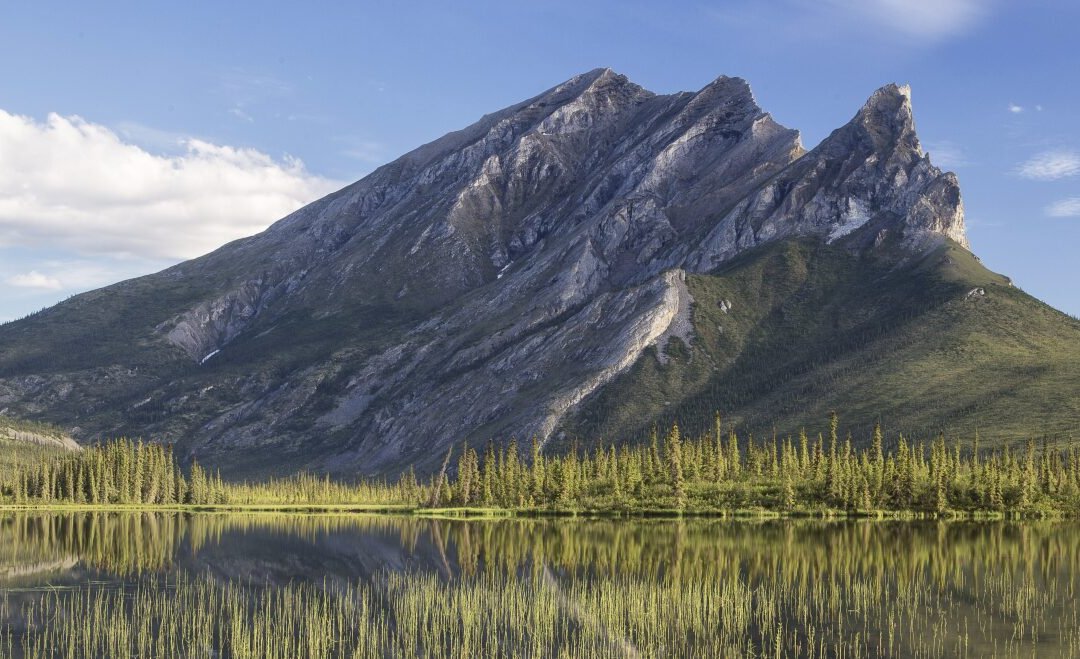
Congress votes to overturn Central Yukon conservation management plan
For over a decade, federal workers collaborated with Alaska Native tribes, Alaskan residents, federal agencies and state representatives to develop a federal strategy to manage public lands in the Central Yukon.
read moreDems urge rural development nominee to push back against Trump administration
WASHINGTON — Democrats urged a U.S. Department of Agriculture nominee to push back against Trump administration policies and stand up for rural communities at a confirmation hearing on Wednesday.
Glen Smith, President Donald Trump’s pick to be the next Under Secretary of Rural Development, largely responded to these entreaties with broad statements agreeing to look into Democrats’ concerns.
Sen. Ben Ray Luján (D-N.M.) began his remarks by appealing to both his and Smith’s history growing up on small farms.
“I certainly hope that when you’re at the table, Mr. Smith, that you’ll stand up for the farmers and ranchers where we grew up, where you grew up,” Luján said. “My Republican colleagues are in the majority. They’re in charge. I get that. But in the end, farmers and ranchers shouldn’t get hurt arbitrarily because someone just had a whim about something.”
Rural communities have been increasingly affected by Trump administration policies, including medicare rollbacks, spending cuts and tariffs, which committee Democrats appeared to note.
Sen. Peter Welch (D-Vt.) focused on workforce reduction in the rural development office in his state, which he described as “overboard.”
Welch said that Smith appeared “sympathetic” to these issues, yet worried about how Smith would negotiate situations where Trump’s policy clashed with farmers’ interests.
“Maybe I’m just putting you on notice,” Welch said.
Sen. Amy Klobuchar (D-Minn.) concentrated on frozen funds, pointing to already awarded energy projects that aren’t being upheld. Klobuchar wanted a commitment that Smith would look into her concerns.
Smith responded to both of these questions with a vague promise to investigate Democrats’ concerns.
“We should all look together,” he said to Klobuchar.
The Trump administration has been under fire for its agricultural policy and its outsized impact on rural communities, as hundreds of thousands of American soybean farmers suffer due to the global trade war. In response to tariffs levied by Trump, China, previously a large buyer of American soybeans, has imposed retaliatory tariffs, effectively halting purchases for extended periods of time.
Indeed, China has now shifted to alternative markets like Brazil and Argentina to purchase soy beans.
After negotiations with Chinese President Xi Jinping last week, Trump announced on social media that Jinping had authorized his country to begin purchasing “massive amounts” of soybeans, sorghum and other farm products. However, the Chinese government has made no public commitment to uphold this agreement, and the deal appears to be a return to the status quo.
Still, Trump’s agricultural nominees continue to express largely uninhibited support for the president.
On Wednesday, Smith said that he had ideas “in carrying out the goals of the Trump administration in serving rural America.”
And, at a confirmation hearing on Oct. 29, Sen. Elizabeth Warren (D-Mass.) grilled Julie Callahan, Trump’s nominee to serve as chief agricultural negotiator, about Trump’s trade deal with Argentina and how Callahan will serve the interests of U.S. farmers.
Callahan repeatedly refused to answer questions relating to the harm caused to soybean farmers by the Trump administration’s bailout of Argentina. She insisted that China was at fault.
“You can’t even acknowledge that our American soybean farmers are having trouble right now?” Warren asked. “If you can’t answer that question, I don’t see how you can represent American soybean farmers.”
Senate committee approves plan for new FBI headquarters
WASHINGTON — The FBI is one step closer to having a new home at the Ronald Reagan Building.
The U.S. Senate Committee on Environment and Public Works (EPW) voted to repurpose the Ronald Reagan Building to hold the new FBI headquarters. The building is located near the Washington Monument, a few blocks away from current FBI headquarters at the J. Edgar Hoover building.
In 2022, Congress passed bipartisan legislation that directed the General Services Administration (GSA), which oversees federal properties, to choose from three options for the location of new FBI headquarters. The agency selected a site in Greenbelt, Maryland the year after.
Instead of moving forward with the GSA-selected site, the Trump Administration announced plans on July 1, 2025 to repurpose the Ronald Reagan Building to house FBI headquarters.
The GSA needs approval from the two congressional committees that authorize federal infrastructure — the EPW and the House Committee on Transportation and Infrastructure — to proceed with the new plan.
The EPW narrowly passed a resolution along party lines to approve the GSA plan to move the FBI to the Ronald Reagan Building Wednesday.
All that remains to finalize the FBI’s move to the Reagan Building is approval from the House committee, which blocked the Greenbelt plan in June.
Some Democratic senators suggested the change of plans was a targeted attempt to pull investment from Maryland, a Democrat-led state — something their conservative colleagues refuted.
“We’re talking about billions of dollars with an excess of federal property that we can’t get rid of,” Sen. Kevin Cramer (R-N.D.) said. “This is not something of a Maryland-versus-Virginia competition. This is about where the FBI should be located.”
Sen. Angela Alsobrooks (D-Md.) raised concerns that the Ronald Reagan Building could not reach the security standard needed for the FBI because of its proximity to public spaces: the building is located above a metro station and includes a public parking garage.
She also said the resolution undermined bipartisan cooperation by selecting a location that was not one of the three options identified by Congress in 2022.
“Congress provided funding and oversight, and GSA made its selection. That selection remains the only legitimate choice,” Alsobrooks said. “And so again, I am extremely disappointed today — disappointed that we abandoned this committee’s bipartisan traditions on GSA prospectuses, and disappointed that we’re not upholding a bipartisan law in a bipartisan way.”
EPW Chairman Sen. Shelley Moore Capito (R-W.Va.) said in response that the recent proposal to repurpose the Ronald Reagan Building was a practical option to lower taxpayer costs, rather than a political move.
“There is nothing in law that prevents our Committee’s approval of the Ronald Reagan Building prospectus today,” Capito said. “I believe it is the right policy to use a facility already owned by a federal government at a lower cost to our taxpayers.”
The EPW also approved seven nominees to positions related to energy and the environment — all but one with 10-9 votes along party lines.
The exception was Ho Nieh, the nominee to the Nuclear Regulatory Commission, who received bipartisan support and a 13-6 vote for approval.
“The meeting went as expected, which is that the Republican majority drove questionable nominees through,” Sen. Sheldon Whitehouse (D-R.I.) said. “I was glad to see bipartisan support for nominees who were not a problem.”
The nominations will now be sent to the Senate floor for confirmation.
Latest in National Security

House committee warns export control loopholes are accelerating China’s chipmaking
Gaps in the system, including insufficient allied controls to weak enforcement and staffing shortages at the Bureau of Industry and Security, are hindering U.S. efforts to enforce chip export rules.
read moreMyanmar in crisis: Lawmakers discuss China’s role, sanctions and junta-led elections
WASHINGTON — Nearly five years after Myanmar’s military coup, the country remains in turmoil, with continued persecution of Rohingya Muslims, expanding scam centers targeting international victims and deepening Chinese influence. At a House Foreign Affairs Committee hearing Wednesday, lawmakers questioned witnesses on how Washington should engage with the country ahead of junta-run December elections widely seen as illegitimate.
“(Myanmar’s) humanitarian catastrophe, its strategic importance in Southeast Asia and the ongoing war’s harmful effects on everyday Americans — all demand a thorough reevaluation of the United States policy,” Committee Chair U.S. Rep. Young Kim (R-Calif.) said in her opening statement.
Witnesses included Kelley Currie, senior fellow at the Atlantic Council’s Indo-Pacific Security Initiative and former Ambassador-at-Large for global women’s issues. Currie repeatedly stressed China’s vested interest in supporting the Myanmar military in the ongoing conflict, citing its supply of weapons to the junta, cutting off resources to ethnic resistance groups and mining of the country’s rare-earth minerals.
Currie added that Chinese transnational criminal organizations form the backbone of scam centers based in Myanmar — rapidly growing, multibillion-dollar criminal networks that traffic people and defraud victims, including many in the U.S..
“There are a number of intersecting conflict economics that are fueling this war and the main beneficiary of these conflict economics and the war itself is not even the military junta — it’s the People’s Republic of China,” Currie said.
Currie urged placing targeted sanctions on the military junta, noting the U.S. rolled back several in July for “no apparent reason,” including those on a key arms dealer — a move sharply criticized by U.N. experts.
Steve Ross, senior fellow at the Stimson Center, underscored that the U.S. must refuse to recognize the results of the upcoming elections, arguing the outcome is predetermined after the junta dissolved the main political opposition parties in 2023.
“These so-called elections will not be free, fair, or inclusive,” Ross said. “Rather they are intended to garner international recognition for the regime in hopes that this will translate into political, financial and military support that enables it to consolidate control.”
Rep. Gabe Amo (D-R.I.) raised the topic of humanitarian aid, specifically the Trump administration’s decision to close USAID earlier this year, thus severely impacting assistance to Myanmar.
“Civilians are dying at the hands of (the Myanmar) military junta, but also from malnutrition and lack of medical care,” Amo said.
Rohingya refugee and activist Lucky Karim echoed Amo’s sentiments about the importance of U.S. aid to Myanmar, adding that it encourages other countries to contribute. She noted that after the closure of USAID, several other countries including the U.K. and Germany have also cut aid to Myanmar.
“The USAID cuts largely and more directly and personally have impacted the community members in the camps including nutrition, learning centers and other programs that are used to provide protections,” Karim said.
Rep. Scott Perry (R-Penn.) urged the committee members to focus on solutions that won’t “encumber taxpayers.” In response, Currie suggested moving frozen Myanmar foreign exchange reserves to a managing account and using the interest to support humanitarian and governance assistance, similar to how interest from frozen Russian assets is being used to support Ukraine.
Currie also suggested pushing countries like Thailand and Bangladesh, which host large Myanmar refugee populations, to authorize refugees to work, in an effort to make the communities more self-sustaining.
“Peace will only come to (Myanmar) when the people of that country are allowed to drive their own future without the interference of their big neighbor China and without the military creating the enabling environment for conflict,” Currie said.
Lawmakers sound alarm on China’s “predatory pricing” of rare earth minerals, express support of American producers and manufacturers
WASHINGTON — Lawmakers reached a consensus that Congress needs to act to prevent China’s dominance in rare earth mineral production over American companies at a House Select Committee on China hearing on Wednesday.
Rare earth minerals are essential to various industries including magnet production, automotive and consumer electronic manufacturing. They also are vital to the defense industry, including the manufacturing of F-35 jets.
“There are many more [rare earth minerals] that are critical to American manufacturing, national security and our economy. Without them, our society would crumble,” Committee Chairman Rep. John Moolenaar (R-Mich.) said. “Bringing mining value chains back to the United States will take time and require concerted effort from Congress and industry. Without a permanent signal from Congress, businesses will not invest, and China’s advantage will grow.”
Ranking Member of the Committee Rep. Raja Krishnamoorthi (D-Ill.) began his opening remarks with a video clip from the cartoon Charlie Brown, where the character Lucy holds a football and moves it away at the last second, causing Charlie Brown to fall on his face.
Krishnamoorthi said that it is a metaphor for the United States continually being tricked by China.
“The CCP (Chinese Communist Party) is running the same old economic playbook in different industries, and we’re falling for it again and again. Here’s the playbook. First, the CCP makes much more stuff than their domestic market requires. Second, they export the excess stuff below their cost,” Krishnamoorthi said. “By doing this, they pull the rug out from under non-Chinese companies trying to compete, and then third, once the CCP has killed the competition, they weaponize their monopoly for coercive purposes.”
Three officials from American mineral producers and magnet manufacturers served as witnesses at the hearing. MP Materials Executive Vice President of Corporate Affairs Matthew Sloustcher emphasized the importance of the global rare earth minerals industry despite its relatively small size but warned of letting China have too much influence.
“It’s tens of billions of dollars, but there’s trillions [of dollars] of economic activity downstream that it impacts, and that’s why this issue just has to be taken off the table,” Sloustcher said.
Lawmakers from both parties shared examples of the impact that predatory pricing of rare earth minerals has on their own constituents.
“Factories in my district face unstable prices for the parts they need. Auto suppliers can’t get the magnets required for electric motors. Steel and chemical producers see costs jump overnight, and workers, many of them union members who keep our district strong, end up facing uncertainty they didn’t create,” Rep. Shontel Brown (D-Ohio) said.
“[Lithium] is a key critical mineral that the U.S. must invest in and that we will see dividends if we properly do,” Rep. Nathaniel Moran (R-Texas) said. “East Texas is at the forefront of that… with companies nearing production in that area.”
Rep. Haley Stevens (D-Mich.), who represents the metro Detroit area, said policymakers recognized years ago that the United States is dependent on China for critical minerals and microchips that are used in the automotive industry. She said she is drafting legislation “to direct loan guarantees, tax credits, create an R&D (research and development) center of excellence” to assist American mineral companies.
“I continue also to join for bipartisan solutions, for a way forward for American manufacturing and our supply chain to beat China,” Stevens said.
Most of the committee members signaled the need for some sort of legislation supporting American companies that produce and use rare earth minerals. Rep. Dusty Johnson (R-S.D.) raised concerns about relying too heavily on government funded support and was more inclined to leave solutions to private companies on the open market.
Sloustcher disagreed, arguing that China is manipulating the market in their favor.
“Free-market capitalism is the engine of our economy… but I think the reality is today, we are not operating in a free market. China is both a monopoly and a non-market economy,” Sloustcher responded.
Latest in Living

Federal workers’ holiday plans thwarted as government shutdown enters fourth week
“People will be getting fewer Christmas cookies this year.”
read moreBipartisan housing affordability and availability package awaits House amid shutdown
WASHINGTON – As the federal government enters its second-longest shutdown in the nation’s history this week, the House of Representatives faces a growing workload when it is brought back in session — including consideration of the Senate-approved “ROAD to Housing Act,” a bipartisan package hailed as the most significant housing reform in a decade.
The Renewing Opportunity in the American Dream (ROAD) to Housing Act of 2025 draws from 27 previously introduced bills focused on boosting the supply of affordable housing. After clearing committee with unanimous support, the measure was folded into the Senate’s National Defense Authorization Act (NDAA) for Fiscal Year 2026, which passed on Oct. 9.
Discussion of housing reform continued in a Senate Banking, Housing, and Urban Affairs subcommittee hearing on Tuesday.
“Home ownership remains a foundational element to the American dream but, as we can see, is out of reach for so many,” Sen. Katie Britt (R-Ala.) said. “This is not a partisan issue. This affects families in Alabama and Minnesota and in every state across our great nation.”
Housing policy is usually left to states and localities, but because the affordability crisis is a national problem, it requires a national response, said Dennis Shea of the Bipartisan Policy Center. That means cooperation between federal, state and local governments as well as the private sector, he added.
The Act uses a few levers — a mix of “carrots” and “sticks” — to push state and local governments toward pro-housing policies, Shea said.
For example, it includes an Innovation Fund to encourage communities to expand housing through streamlined permitting, density bonuses and zoning changes. Another provision ties Community Development Block Grants in high-cost areas to housing production, with the risk that communities not producing housing would lose funds, according to the text of the bill.
“Solving the housing shortage is not about more bureaucracy. It’s not about spending more and more government subsidies. It’s about unleashing locally-driven solutions and cutting red tape while empowering builders and incentivizing private sector investment,” Britt said.
The Senate subcommittee elevated local solutions like weather-resistant homes in coastal Alabama and modular construction in Minnesota that have already proven cost effective.
“Building stronger, more resilient homes reduces the damage during disasters, fewer insurance claims and lower premium costs,” said Lars Powell, executive director of the Center for Risk and Insurance Research.
The witnesses stressed that the ROAD to Housing Act would enable many more communities to follow suit.
Although the Act already passed the Senate two weeks ago, Sen. Tina Smith (D-Minn.) told Medill News Service that the hearing keeps the ball rolling. As the legislation still needs to be reviewed by the House, the Senate hopes it remains in public focus.
The House passed its version of the NDAA without the housing provisions in September, so the two chambers will have to reconcile the differences once Speaker Mike Johnson brings the House back in session.
Shea said attaching the ROAD to Housing Act to a “must-pass” bill like the NDAA was strategic because Congress often aims to pass the defense bill by Thanksgiving. If the shutdown drags on and the House skips markups due to time constraints, he added, it’s possible that lawmakers pass the Senate version of the NDAA, leaving the ROAD to Housing Act intact.
“I know that this is a step in the right direction. We were able to pass it off at the Senate floor,” Smith said. “We need to continue to work to move that and other housing reforms forward so that we can fulfill the hope in this country — the fundamental freedom that people want to be able to own their own home.”
Supreme Court hears arguments over Mexico’s suit against U.S. gunmakers
WASHINGTON – Supreme Court Justices heard oral arguments on Tuesday about whether U.S. gun manufacturers can be held accountable for the production and sale of firearms and the proximate harm their products cause in Mexico by contributing to drug cartel violence.
In 2021, the Mexican government filed a lawsuit against U.S. gun manufacturers, claiming they had aided and abetted illegal gun sales to traffickers for use by Mexican cartels. The suit alleged firearms companies engaged in business practices for decades that created a supply of weapons smuggled across the U.S.-Mexico border.
The Mexican government is asking for $10 billion in damages in addition to “injunctive relief,” which would impose new gun control measures in the U.S.
A federal district court in Massachusetts dismissed the case under Protection of Lawful Commerce in Arms Act (PLCAA), which bars lawsuits against firearms companies based on criminals misusing their products.
The U.S. Court of Appeals First Circuit reversed the decision, ruling that PLCAA does not apply in this case since Mexico has claimed gun manufacturers’ business practices have aided and abetted firearms trafficking to cartels, which has ultimately harmed the Mexican government.
This is the first time the Supreme Court has considered the legality of PLCAA since it was enacted with bipartisan support in 2005.
Raymond M. Sarola, of counsel at Cohen Milstein, filed an amicus brief in support of Mexico on behalf of law enforcement officers across the country.
If the court rules in favor of the Mexican government, Sarola said, “Hopefully litigation like this would cause an industry to take affirmative steps when it is aware that the conduct that it is engaged in is having these terrible consequences.”
During oral arguments, justices appeared skeptical of both sides.
Justice Amy Coney Barrett pressed Noel Francisco, the lawyer arguing on behalf of the gun companies, on how the issue of proximate cause was framed within the context of the case.
“You haven’t sued any of the retailers that were the most proximate cause of the harm. And you haven’t identified them that I can tell in the complaint.”
In an amicus brief supporting the petitioners Smith and Wesson Brands, David Tryon, the Director of Litigation at The Buckeye Institute, argued that a ruling in favor of Mexico could potentially cripple American gun manufacturers, which he believes encroaches on the Second Amendment.
“This is a Second Amendment case because they are very clear, because that law was passed to protect the Second Amendment, and this is designed to invade that law and to attack the firearms industry and basically bankrupt the firearms industry, because they’re asking for billions and billions of dollars in damages.”
When hearing arguments in Mexico’s favor, Justice Ketanji Brown Jackson expressed her concern about PLCAA and protecting Congress’s prerogative to regulate the firearms industry.
“All of the things that you ask for in this lawsuit would amount to different kinds of regulatory constraints that I’m thinking Congress didn’t want the courts to be the ones to impose.”
Timothy Lytton, a Regents’ Professor and Professor of Law at Georgia State University who filed an amicus brief on behalf of Professors of Tort Law, Statutory Interpretation, and Firearms Regulation in support of neither party, emphasized the impact that a ruling in favor of Smith and Wesson could have on the legitimacy of PLCAA.
“If the court holds in favor of Smith and Wesson’s argument with regard to proximate cause, it will eliminate any possibility of liability for injury arising out of criminal misuse of a weapon. That would be a radical expansion of what Congress intended when it passed the federal immunity shield.”
The court is expected to reach its decision in summer 2025.
Latest Business

Lawmakers pressure House to vote on congressional stock trading ban
Democrats and Republicans alike have expressed support for a ban.
read moreSupreme Court scrutinizes Trump’s sweeping tariffs, limits of presidential power in historic case
WASHINGTON – Supreme Court justices sharply questioned President Donald Trump’s tariff agenda and appeared skeptical of its legality under the International Emergency Economic Powers Act (IEEPA) during oral arguments on Wednesday.
The consolidated cases were brought before the Court by small businesses—an educational toy company and wine importer—as well as a coalition of 12 states.
IEEPA grants the president the ability to regulate economic transactions after declaring a national emergency. While all presidents since Jimmy Carter have invoked IEEPA, they have done so to impose sanctions in response to specific national security threats. Trump is the first to rely on the Act to enact tariffs on imported goods.
Several justices expressed doubt regarding the president’s power to unilaterally impose tariffs, an authority traditionally held by the legislative branch according to Article I of the Constitution.
Justice Amy Coney Barrett questioned Solicitor General D. John Sauer on whether IEEPA provides either a statutory or historical basis to impose tariffs.
“Can you point to any other place in the Code or any other time in history where that phrase, together, ‘regulate…importation,’ has been used to confer tariff-imposing authority?” Barrett said.
Her question prompted back-and-forth dialogue with Sauer, who ultimately pointed to a “contested application”—as described by Barrett—in the Trading with the Enemies Act (TWEA).
The authority question raises the applicability of the major questions doctrine, which holds that Congress must provide explicit congressional authorization before the executive branch takes actions of “vast economic or political significance.”
Chief Justice John Roberts, whose vote is expected to help swing the decision, contested Sauer’s claim that the major questions doctrine “does not apply here.”
Justice Sonia Sotomayor also said she “does not understand” the argument that “foreign powers or even an emergency can do away with the major questions doctrine.”
Sauer reiterated that the president imposed tariffs as a means to “regulate” imports and that their revenue-raising effect is “only incidental.”
Both conservative and liberal justices challenged Sauer on this point, with Sotomayor pointing out that IEEPA does not contain a statute permitting revenue generation “as a side effect or directly.”
“It’s been suggested that the tariffs are responsible for significant reduction in our deficit,” Roberts said. “I would say that’s raising revenue domestically.”
While Sauer contended against the idea that regulatory tariffs are “distinct” from taxes, Neal Katyal, a lawyer representing small businesses against the tariffs, argued the opposite.
Katyal described the president’s tariff agenda as resulting in “one of the largest tax increases in our lifetimes.” He also focused on the term “regulate” in IEEPA, its interpretation being a key point of contention among the parties.
“[IEEPA] uses ‘regulate,’ which Congress has used hundreds of times, never once to include tariffs,” Katyal said. “And that is why, even though presidents have used IEEPA to impose economic sanctions thousands of times, no president in IEEPA’s 50-year lifetime has ever tried to impose tariffs.”
Several competing amicus briefs also home in on this language. Zac Morgan of the Washington Legal Foundation (WLF)—a law firm and policy center that filed a brief against the imposition of tariffs—said that “this entire case is about what…‘regulate importation’ means.”
“‘Regulate’ and ‘importation’ are separated by 16 words, and all of those words involve compellence, voidance…the kind of things you would expect to see in a sanctions authority,” Morgan said.
According to Morgan, IEEPA is intended for imposing financial sanctions and quotas as opposed to conferring tariffs or “setting rates at whim.”
The American Center for Law and Justice (ACLJ) focused on different considerations in its brief, namely the limits of judicial review on the president’s international governance. The brief mentions a key phrase in Section 1701 of IEEPA, “any unusual and extraordinary threat,” which serves as a “trigger” for the emergency authority outlined in Section 1702.
“When we’re talking about the national and international decision making relating to IEEPA, the president is given more information than any of us can have in terms of intelligence,” said Nathan Moelker, senior associate counsel at the ACLJ. “In that context, judicial review of what constitutes an unusual, extraordinary threat doesn’t fit with how IEEPA is structured.”
More broadly, Moelker emphasized that this is not an “easy” case for justices to wrestle with as they “navigate specific statutory language.”
Trump took to Truth Social on Tuesday to reiterate the case’s importance for his economic agenda, referring to it as “LIFE OR DEATH for our Country.” He previously floated the idea of attending the arguments but backtracked earlier this week.
In attendance at the Court were Treasury Secretary Scott Bessent, U.S. Trade Representative Jamieson Greer and Commerce Secretary Howard Lutnick. Several lawmakers, including Senators Ed Markey (D-Mass.), Amy Klobuchar (D-Minn) and Mike Lee (R-Utah) were also present.
If the president’s tariffs are struck down by the high court, more than $100 billion in refunds may be issued to importers. A decision against Trump would also mark the Supreme Court’s most significant rebuke yet of his presidential authority in the second term.
A decision is expected by summer 2026, but the expedited nature of the case makes an earlier ruling possible.
Watch: D.C. ‘shyster’ trades briefcases for buns, launching hot dog stand during shutdown
WASINGTON — As Washington grinds to a halt during the government shutdown, furloughed IRS lawyer Isaac Stein is firing up his grill.
Fulfilling what he calls his ‘childhood dream’, Stein’s new workplace is the corner of 1st and M St NE, where his pop-up hot dog cart, Shyster’s Dogs (@shystersdogs), has become a local and Internet obsession thanks to his suit-and-tie service and cheeky menu serving “correct” and “wrong” hot dogs, Moon Pies, and RC Colas.
Watch the video report here:
SOTU: Health Care
WASHINGTON – President Donald Trump said Tuesday that Congress should approve his plan to replace Obamacare with a new health care program that would provide “affordable alternative” insurance options and criticized Democrats for trying to impose “a socialist takeover of our health care system.”
“A good life for American families requires the most affordable, innovative and high-quality health care system on earth,” Trump said in his third State of the Union address.
Trump said he has proposed health care plans that would be up to 60% cheaper than the Affordable Care Act plans. Both the White House and the Department of Health and Human Services did not respond when asked if a specific replacement plan has existed or ever will.
The president blamed Democrats for not providing the American people with the health care reforms he has promised.
“As we work to improve Americans’ health care, there are those who want to take away your health care, take away your doctor, and abolish private insurance entirely,” said Trump, referring to the Democrats.
Democrats stood up at this comment, pointed their fingers at Trump and shouted “YOU.”
Trump said 130 Democrats endorse legislation to impose a “socialist takeover” of the health care system by “taking away the private health insurance plans of 180 million.”
Democratic presidential candidates Sen. Bernie Sanders, I-Vt., and Sen. Elizabeth Warren, D-Mass., are pushing for a “Medicare for All” plan that would end private health insurance while other candidates like former Vice President Joe Biden, Pete Buttigieg and Sen. Amy Klobuchar, D-Minn., are pushing to expand on Obamacare.
“We will never let socialism destroy American health care,” Trump said.
Trump emphasized the administration’s efforts to protect patients with pre-existing conditions, to which Democrats threw up their hands and shook their heads in disagreement. Led by House Speaker Rep. Nancy Pelosi, D-Calif., Senate and House Democrats brought more than 80 patients, doctors and health care advocates from across the country as guests to the speech.
“President Trump will speak to an audience filled with Americans who are suffering because of his broken promises on prescription drug costs and his all-out assault on Americans with preexisting conditions,” Pelosi said in a press release Tuesday morning.
The president also called upon Congress to pass legislation to lower prescription drug prices.
“Get a bill to my desk, and I will sign it into law without delay,” the president said.
Democrats responded to this by booing and holding up three fingers to represent H.R. 3, legislation proposed by the late Rep. Elijah E. Cummings that would require the Centers for Medicare and Medicaid Services to negotiate certain drug prices. The bill has been on Senate Majority Leader Mitch McConnell’s desk for over a month after being passed in the House.
Generic prescription drug prices dropped 1% in 2018, the first price drop in 45 years, according to the Department of Health and Human Services. Trump said it was the first time in 51 years. Brand-name drug prices, however, are still increasing.
Trump said the administration will continue to make health care more transparent by requiring hospitals to make their prices negotiated with insurers public and easily accessible online. He also pointed to the passage of administration-backed legislation called “Right to Try,” which allows terminally ill patients access to drugs not fully approved by the Food and Drug Administration if they feel they have tried all other options.
He also said he has launched new initiatives to improve care for Americans with kidney disease, Alzheimer’s and those struggling with mental health challenges, in addition to pursuing new cures for childhood cancer and AIDS.
The House Ways and Means Committee will hold a hearing Wednesday afternoon to further discuss Trump’s health care policies and overcoming pharmaceutical barriers in particular.
Trump Sticks By Wall in State of the Union Address
WASHINGTON – President Donald Trump’s call for a wall to secure America’s southern border in his State of the Union address Tuesday night was no surprise to opponents.
Jennifer Johnson, the policy director at the Southern Border Communities Coalition, said Trump continually characterizes the southern border as a violent area.
“More of a reality check, these are families and children seeking protection, fleeing spiraling violence and poverty,” she said.
Chris Montoya, who served as a Customs and Border Protection agent for 21 years, said that “crime rates are pretty low in border cities. Being a border patrol agent is one of the safest law enforcement jobs. All those things together means a safe border.”
Rep. Adriano Espaillat, D-N.Y., invited as his guest a mother who had been separated from her children at the border.
Other Democrats brought undocumented immigrants as their guests, including Sen. Jeff Merkley, D-Ore., Rep. Jimmy Gomez, D-Calif., and Rep. Bonnie Watson Coleman, D-N.J.
Rep. Sheila Jackson, D-Texas, was enthusiastic about their attendance at the address. “Their presence here today is representative of the big tent that America is,” she said.
In his address, Trump attributed what he called at crisis at the border to America’s “reduced jobs, lower wages, overburdened schools, and hospitals that are so crowded you can’t get in.” He referenced San Diego and El Paso as being cities that were once violent, and now safe with the addition of physical barriers.
Trump also mentioned the prevalence of MS-13 within the country. “They almost all come through our Southern border,” he said.
Montoya said MS-13 members do enter through the southern border on rare occasions, but it is uncommon for CBP agents to make an arrest.
Senate Minority Whip Dick Durbin is the ranking member on the Senate Subcommittee for Border Security and Immigration. He said nothing changed in Trump’s rhetoric. “If we’re waiting on him, we’re not going to get this solved,” he said.
Washingtonians alternately protest, celebrate the State of the Union
WASHINGTON – DC-area residents had very different reactions to President Donald Trump’s second State of the Union address Tuesday night. But whether they celebrated or denounced the event, emotions were strong.
Around 40-50 people gathered at each of two intersections near the Capitol ahead of the address — far fewer than the 400 people who protested last year, according to Resist DC, the community action group that organized both years’ protests.
People lined the sidewalks along the streets that President Donald Trump, Vice President Mike Pence and other Trump cabinet members’ motorcades were expected pass by. They held homemade signs lit with string lights so they would be visible to government officials in their cars and chanted anti-Trump messages to music and drums.
Eileen Minarick, 70, said she was protesting simply “because the state of our union is terrible.”
Elsewhere in the city, local bar patrons gathered to drink beer, compete in presidential bingo and watch the State of the Union.
Grassroots activist group CODEPINK hosted a number of guest speakers, including actor Danny Glover, for a lively discussion before the main event. Topics ranged from the Bolivarian revolution to ending domestic violence.
Anita Jenkins, spokeswoman for Stand Up for Democracy, riled the crowd with a call to establish the District of Columbia the 51st state in the United States.
“The people of D.C. have no representation… We have nobody to speak for us,” she said. Modifying the words of America’s early founders, she said, “Taxation without representation is a rip-off.”
As President Trump appeared on the projector, shouts of disapproval rose from the bar patrons. The State of the Union 2019 had begun and the energy was energetic in its moroseness.
Across town, the atmosphere was also charged. Members of DC Young Republicans and Arlington Falls Church Young Republicans filled a restaurant for a celebratory viewing party.
“In the past, most of the people in this room voted for a wall… but the proper wall never got built,” said Donald Trump. He paused and then said, “I’ll get it built.” Hoots and hollers erupted in the bar and two girls were seen smiling and hugging each other.
Though Trump stressed unity in his national address, DC-area residents remained divided in their reactions.
2020 Candidates Alternate Cheers, Hisses to Trump Wall, Immigration Proposals during State of Union
WASHINGTON – Several Democratic 2020 presidential candidates expressed their displeasure with many of President Donald Trump’s policies during the State of the Union address Tuesday.
Sens. Kamala Harris, D-Calif., and Elizabeth Warren, D-Mass., could be seen shaking their heads when Trump mentioned controversial topics such as his commitment to building a border wall and the dangers of migrant caravans heading to the U.S. southern border.
Harris, who announced her candidacy on Jan. 21, shook her head and visibly mouthed, “They’re not,” as Trump said, “Large, organized caravans are on the march to the United States.”
In a Facebook Live address before the State of the Union, Harris told viewers, “It’s a moment for a president to rise above politics and unite the country with a vision that includes all Americans, not just the ones who may have voted for them. It’s a moment to bring us together.”
Early in the address, Harris was often reluctant to give Trump a standing ovation, asking her colleagues, “Really?” as they cheered the president’s comments about space exploration.
The candidates and their Democratic colleagues booed and hissed as Trump labeled the numerous investigations into his campaign finance and relationship with Russia “ridiculous partisan investigations.”
“If there is going to be peace and legislation, there cannot be war and investigation,” he said. “It just doesn’t work that way!”
Democrats cheered later as Trump mentioned that women have filled 58 percent of new jobs in the past year. New York Sen. Kirsten Gillibrand, who has formed a presidential exploratory committee, pointed at the newly elected House Democrats, who stood up and chanted, “USA, USA.”
“I think he didn’t realize that all the female jobs he created were for [congresswomen],” Gillibrand said after the speech.
The Democratic candidates stood and applauded with everyone in the chamber when Trump recognized World War II veterans, a SWAT team member and a childhood cancer survivor.
Sen. Bernie Sanders, I-Vt., sat stoically as Trump denounced socialism. Sanders, who calls himself a democratic socialist, is widely considered likely e to enter the presidential race. Unlike Sanders, Gillibrand and Harris stood and applauded as Trump said, “America will never be a socialist country.”
TRUMP STRIKES CHORD WITH WOMEN, FALLS FLAT ON BIPARTISAN BORDER WALL PITCH
WASHINGTON — President Donald Trump got one of his biggest rounds of applause during his State of the Union address Tuesday night when he noted that Congress now has a record-high number of elected women, but it wasn’t lost on the crowd that when the women rose to cheer they were mostly on the Democratic side of the aisle.
“Americans can be proud that we have more women in the workforce than ever before,” Trump said as the women lawmakers rose to clap and celebrate. He then advised them “Don’t sit. You’re going to like this.”
“Exactly one century after the Congress passed the constitutional amendment giving women the right to vote, we also have more women serving in the Congress than at any time before,” he said. There were 117 women elected to Congress in 2018.
Bipartisan chants of “USA! USA!” filled the chamber as both the Democrats and Republicans broke into uproarious applause. Many of the Democratic women wore white and donned pins that read “ERA YES,” in a nod to the women of the suffragette movement.
Trump called his list of priorities “the agenda of the American people” in his second State of the Union address Tuesday, which was delayed a week because of the 35-day government shutdown, which didn’t end until the previous Friday. The address was the first the president has delivered before the new Democratic majority in the House.
The president remained on-script for the duration of the 84-minute speech and touted his administration’s achievements from the past two years. He also laid out several legislative priorities going forward, including a “smart, strategic, see-through steel barrier,” an infrastructure bill and the eradication of HIV and AIDS.
Rep. French Hill, R-Ark., was glad that health care was a topic in the speech, while Sen. John Barrasso, R-Wyo., described the speech as “terrific.”
“We haven’t gotten that right when it comes to protection our citizens with pre-existing conditions, correcting all the problems and costs associated with the ACA,” French said. “I like that he kept an emphasis on that while also tackling the prescription drug process.”
For Sen. Tom Carper, D-Del., laying out these broad initiatives wasn’t enough.
“I wrote down a number of initiatives — defense spending, cancer research, transportation, infrastructure — and never heard anything of how we’re going to pay for them,” he said.
The president also pushed his plan to withdraw U.S. troops from Syria and to reduce drastically the number of troops in Afghanistan.
Among Democrats, reactions were mixed as Trump highlighted his achievements. When Trump lauded the U.S. increase in gas and oil production, Rep. Alexandria Ocasio-Cortez, D-N.Y., who has championed a Green New Deal to address accelerating climate change, remained seated.
Many Democrats applauded Trump’s push for a new infrastructure bill and decision to withdraw troops from Syria and Afghanistan.
House Speaker Nancy Pelosi, who sat behind Trump with Vice President Mike Pence, was clearly following a printed version of the speech. She applauded when Trump mentioned criminal justice reform and bipartisan efforts on lowering drug costs and furthering women’s rights.
After praising a recent bipartisan effort to secure criminal justice reform, Trump shifted to a project he said would require the same bipartisan effort: a southern border wall.
“Simply put, walls work and walls save lives,” he said. “So let’s work together, compromise and reach a deal that will truly make America safe.”
However, Rep. Pramila Jayapal, co-chair of the Congressional Progressive Caucus, was not encouraged by the president’s attempt to strike a bipartisan tone.
“I just don’t think he is to be trusted,” she said. “This is not a president who is working for the middle class of this country.”
Rep. Eliot Engel, D-N.Y., said that while parts of Trump’s speech were good, he was too combative at times.
“There should have been more emphasis on the fact that the government was shut down and we all need to work together to bring it back,” he said. “Blaming the Democrats is not going to keep the government open.”
Freshmen members of Congress excited, disappointed at their first State of the Union address
WASHINGTON — Before attending his first State of the Union address, Rep. Jefferson Van Drew, D-N.J., felt a sense of excitement and joy, but also feared the president might once again fan partisan flames by rehashing controversial issues.
“I hope that right now, he doesn’t talk about closing the government again. I hope he doesn’t talk right now about declaring a national emergency. I would so much rather see that we try to work together and get something done. That requires flexibility on Democrats side as well. Both sides have to do this,” said Van Drew.
Partisanship is the reason the approval rating for Congress is so low, but issues like border security, and infrastructure deserve cooperation between the two parties, said Van Drew.
“Rather than just argue and disagree and investigative and be hurtful on both sides, maybe we can actually get something get done.”
▬▬▬▬▬▬▬▬▬▬▬▬▬▬▬▬▬▬▬▬▬▬▬▬▬▬▬▬▬▬▬▬▬▬▬▬▬▬▬▬▬▬▬▬▬▬▬▬▬▬▬▬
Although having been full-fledged members of Congress for a little over a month, the freshmen class of senators and representatives still retains a “sense of awe” about the State of the Union address, said Rep. Chris Pappas, D-N.H. Pappas said he hoped Trump would strike a conciliatory tone with Democrats, allowing lawmakers to avoid a second government shutdown.
Pappas brought a transgender military veteran from his home state to hear the president as a symbol of his hope that Trump’s transgender military service ban will be lifted.
“That doesn’t make us any safer and in fact plays politics with the military,” he said.
In addition to passing social justice reform, Pappas said he would like Trump to speak about the opioid crisis, prescription drug costs and infrastructure — and Trump did.
▬▬▬▬▬▬▬▬▬▬▬▬▬▬▬▬▬▬▬▬▬▬▬▬▬▬▬▬▬▬▬▬▬▬▬▬▬▬▬▬▬▬▬▬▬▬▬▬▬▬▬▬
In Illinois Rep. Sean Casten’s dreams, Trump’s State of the Union address would make climate change a priority, but said his expectations were low. Trump did not in fact mention the environment.
“Truth is what I hope he doesn’t say is what I fear he will say,” Casten said, “which is that he’s going to threaten to shut down the government again if he doesn’t get a wall.”
Casten’s guest was Julie Caribeaux, the executive director of Family Shelter Service, which receives federal aid and provides support for victims of domestic abuse. He said domestic violence victims are some of the “primary victims” of Trump’s rhetoric.
▬▬▬▬▬▬▬▬▬▬▬▬▬▬▬▬▬▬▬▬▬▬▬▬▬▬▬▬▬▬▬▬▬▬▬▬▬▬▬▬▬▬▬▬▬▬▬▬▬▬▬▬
Rep. Anthony Brindisi, D-NY, was hoping for a message of bipartisanship and unity, things that “the American people are calling for.” Trump did call on Congress to act together on many issues.
Brindisi’s top priorities this year are trying to find common ground with the Republicans on immigration reform, infrastructure and lowering prescription drug costs. On infrastructure, he said he specifically wanted to hear Trump’s ideas on investing in job training programs. Trump mentioned all the issues, but with little specificity except that he wants a border wall and enforcement to stop what he called “caravans of migrants” heading to the southern border.
“Those are things that I talked about during the campaign that many people back in upstate New York are calling for and those are things I hope he does say,” Brindisi said.
▬▬▬▬▬▬▬▬▬▬▬▬▬▬▬▬▬▬▬▬▬▬▬▬▬▬▬▬▬▬▬▬▬▬▬▬▬▬▬▬▬▬▬▬▬▬▬▬▬▬▬▬
Rep. Susie Lee, D-Nev., said she gets excited every time she walks onto the House floor, and Tuesday was no exception. Although there were parts of the speech she did not agree with, namely Trump’s insistence on a border wall, Lee said she appreciated the call for bipartisanship.
Lowering prescription drug prices, investing in infrastructure and a comprehensive border control strategy — these are all components of his speech Lee said she could agree with.
“These are all ideas I can get behind and they work together to produce some results for American families,” she said.
▬▬▬▬▬▬▬▬▬▬▬▬▬▬▬▬▬▬▬▬▬▬▬▬▬▬▬▬▬▬▬▬▬▬▬▬▬▬▬▬▬▬▬▬▬▬▬▬▬▬▬▬
Rep. Deb Haaland, D-N.M., said she was dismayed about Trump’s urgency regarding funding for a border wall.
“I wasn’t surprised. Let’s put it that way about the president’s speech. I mean, of course, we don’t want a wall,” said Halland. “He instilled fear and everybody about the danger, you know, the danger that’s coming across the border.”
Haaland hopes to focus on promoting awareness about climate change and wished the President would be more receptive to the diverse issues and people around the country.
▬▬▬▬▬▬▬▬▬▬▬▬▬▬▬▬▬▬▬▬▬▬▬▬▬▬▬▬▬▬▬▬▬▬▬▬▬▬▬▬▬▬▬▬▬▬▬▬▬▬▬▬
Rep. Chuy Garcia, D-Ill., said he enjoyed his first State of the Union in a historical sense, but wanted President Trump to address issues he feels are important, including raising the minimum wage and healthcare.
He said while the president did mention lowering prescription drug costs, there was another area of healthcare that was not noted, such as the millions who do not have healthcare at all.
“He wrapped himself around a lot of patriotism and recognition of your courageous battles and victories and but in the end, I think he failed to address important things more,” Garcia said.
Post-SOTU Interviews with Illinois Democratic Reps. Jan Schakowski and Cheri Bustos
Our Alex Lederman sat down with Illinois Democratic Reps. Jan Schakowski and Cheri Bustos after the State of the Union to hear their thoughts on President Obama’s address.
Schakowski — Evanston’s congresswoman since 1999 — said “(Obama)’s vision of what makes our country strong was so human and so true.”
Bustos said Obama is focused on the future — our children and grandchildren — and working together to solve the nation’s problems.
Medill’s State of the Union night on social media
Medill on the Hill produces live State of the Union broadcast
WASHINGTON — It was the third day of reporting for the 21 students in Medill on the Hill. It also happened to be the day the president would deliver his final State of the Union address.
Months ago, buoyed by the excitement of the possibilities and the folly of youth, some of us came up with the idea of taking Medill on the Hill to a new level — producing live TV while also finding new ways of storytelling for the website and social media.
On State of the Union night, Jan. 12, the Washington web team led by Alex Duner and Celena Chong managed the flow of copy and constant web updates streaming in from reporters around Capitol Hill and elsewhere in D.C. There also was a constant stream of @medillonthehill tweets and snapchats as well as several Periscopes.
Tyler Kendall, Allyson Chiu and Shane McKeon were responsible for the main story, and Chiu said the experience was, “the highlight” of her journalism career.
“It was hectic, crazy and we were definitely all running on adrenaline by the end of the night,” she said.
Other reporters were assigned to stories on specific issues the president mentioned, or how local college students reacted to the speech. One even tweeted the speech in Spanish.
My task was to produce the Washington end of a live television broadcast.
Nine months ago Jesse Kirsch came back from 2015 Medill on the Hill with an idea for Carlin McCarthy, another producer with the Northwestern News Network, and me.
He said, with the optimism of a television anchor, that for the 2016 State of the Union we should produce a live broadcast with analysts at our home studio in Evanston and reporters in our D.C. bureau and on Capitol Hill. I said, with the skepticism of a television producer, that I thought he was crazy.
It took long nights, patience and a lot of support from the Medill faculty and staff, but we pulled it off.
Jesse opened the show in Evanston and before we knew it Isabella Gutierrez was doing a live hit from the Washington bureau. Then we were live in Statuary Hall with Noah Fromson, followed by a live report from graduate student Ryan Holmes on what to watch for just minutes before we streamed the live feed of President Barack Obama addressing a joint session of Congress for his final State of the Union.
We did a live interviews with Senate Democratic Whip Dick Durbin, wrote scripts while we counted down the seconds until they were read and gathered quotes from senators and members of Congress. Alex Lederman also provided quick-turn video interviews with two congresswomen.
Associate Producer Geordan Tilley, who interviewed Durbin, was nervous before the show, but she said she is proud of the Medill effort.
“I thought the show was some of our best work, Tilley said. “Especially considering how many firsts were involved, not the least of which was our first time going live.”

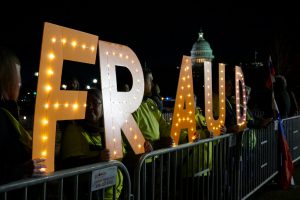
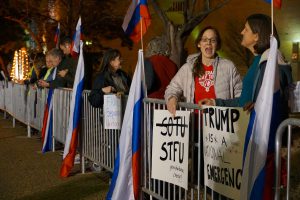










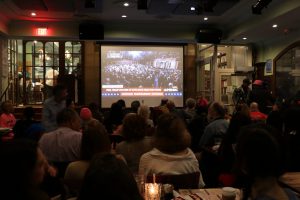

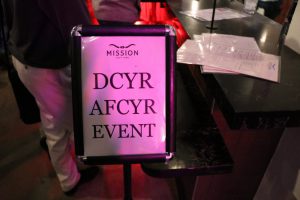










In Photos: Former presidents, vice presidents gather in remembrance of Dick Cheney
by Avigna Ramachandran, Riddhimaa L. Kodali and Katareena Roska | November 20, 2025 | Featured, Politics | 0 Comments
The former vice president was honored by attendees across the aisle, but some notable political figures were not present.
House committee warns export control loopholes are accelerating China’s chipmaking
by Misha Manjuran Oberoi | November 20, 2025 | Featured, National Security | 0 Comments
Gaps in the system, including insufficient allied controls to weak enforcement and staffing shortages at the Bureau of Industry and Security, are hindering U.S. efforts to enforce chip export rules.
Democrats skip Senate hearing on anti-ICE protests
by Aanika Sawhney and Naomi Taxay | November 20, 2025 | Featured, Immigration | 0 Comments
California Senator Alex Padilla called the hearing an “exercise in Republican political theater” before walking out.
House lawmakers weigh negative implications of AI chatbot technology on mental health and data privacy
by Gabe Hawkins | November 20, 2025 | Featured, Politics | 0 Comments
The Energy and Commerce Committee Subcommittee on Oversight and Investigations held a hearing on AI chatbots.
HOUSE REPUBLICANS RAISE CONCERNS OVER “SOFT ON CRIME” POLICIES IN DEMOCRATIC RUN CITIES
by Gabe Hawkins and Isabella Jacob | November 20, 2025 | Featured, Politics | 0 Comments
The House Judiciary Committee Subcommittee on Oversight held a hearing on violent crime in Democratic cities.